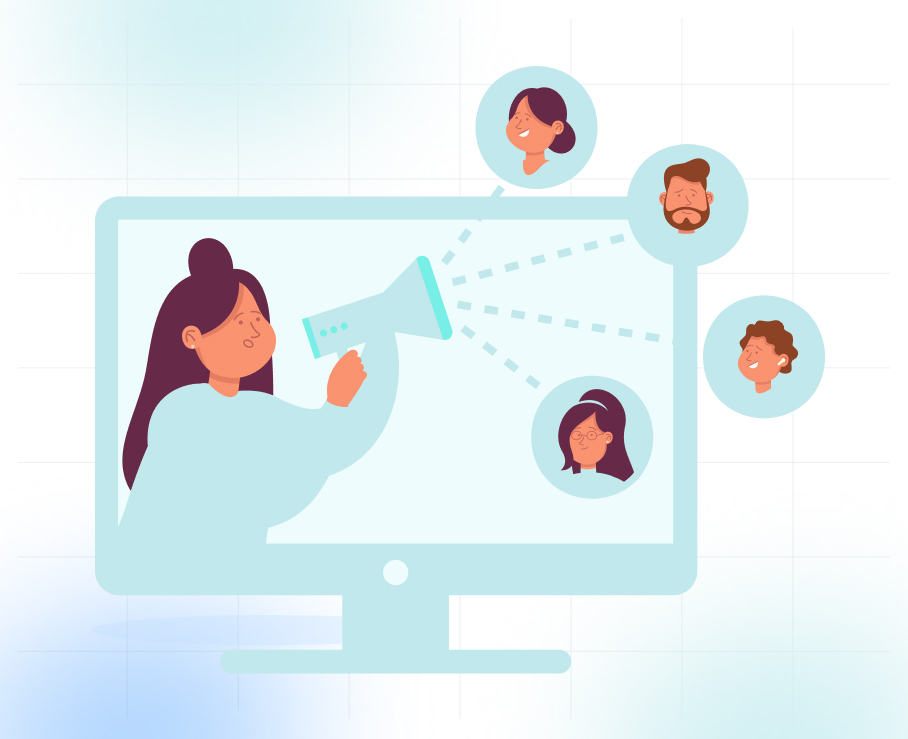
Benefits of Appointment Setting Services
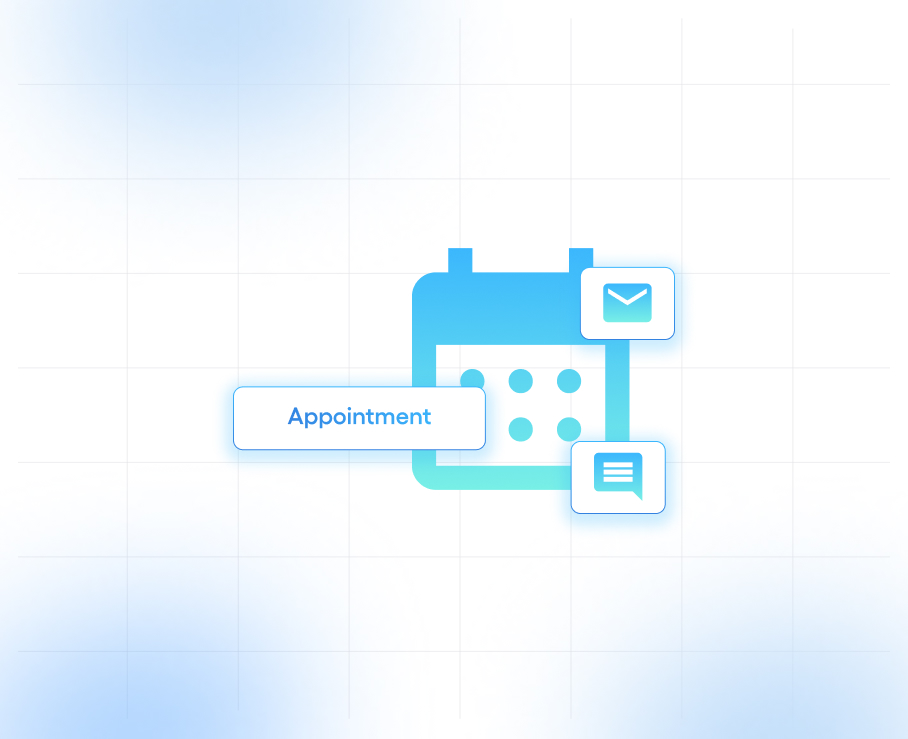
Appointment Setting Isn’t Optional—It’s Where Sales Begin
Most teams know that setting qualified appointments drives the pipeline. In fact, 90% of sales pros agree it works. But only 21% treat it as a priority.
That disconnect costs revenue.
Instead of chasing cold lists or filling calendars with low-intent calls, companies that invest in real appointment setting move differently. They focus on the right conversations, ones that come from fit, timing, and actual interest. Not volume.
The goal isn’t more meetings. It’s fewer, better ones, with people who are already halfway to a decision.
Done right, appointment setting doesn't just save time. It clears out distractions, sharpens outreach, and gives your team a clear path from lead to close.
Key Takeaways
- Appointment setting drives qualified sales conversations, not just calendar fills.
- It filters unqualified leads, saving sales reps time and boosting close rates.
- Stages include: target identification, personalization, outreach, qualification, follow-up, and scheduling.
- Top benefits:
- Frees sales reps to focus on closing.
- Reduces pipeline noise.
- Maintains momentum in long sales cycles.
- Improves first impressions.
- Adds predictability to sales planning.
- Connects marketing insights to sales execution.
- Helps small teams scale like larger ones.
- Outsourcing adds value through faster ramp-up, lower cost per lead, scalability, and better targeting.
- Pricing models: pay-per-appointment or monthly retainer, choose based on your sales motion.
- Choosing the right service means checking for domain expertise, ROI-driven pricing, sales alignment, and multichannel capabilities.
- To maximize ROI, use:
- Tiered lead prioritization
- Feedback loops between sales and setters
- Cadence A/B testing
- Long-term lead nurturing
- Seamless handoff processes
- Incentives tied to pipeline quality, not just volume
- Appointment setting = strategic revenue engine when done with structure, intent, and tight sales alignment.
What Is Appointment Setting?
Appointment setting is the groundwork of any serious sales pipeline. It’s the process of identifying potential buyers, making first contact, qualifying their interest, and booking a time for them to speak with a sales-ready representative.
Instead of having salespeople spend hours on cold outreach or coordinating calendars, appointment setters take on the early legwork, freeing up your closers to do what they do best.
A strong appointment-setting process usually includes the following stages:

1. Target Identification
The process begins with building a focused list of prospects who match your ideal customer profile. This can include filters like job title, company size, industry, and region. It's not about reaching everyone, it’s about reaching the right ones.
2. Research and Personalization
Before any outreach, each prospect is reviewed to gather key context, such as recent activity, business model, or mutual connections. Even light personalization can boost response rates and improve first-touch conversations.
3. Outreach and Initial Contact
Appointment setters typically begin outreach via email. The goal is to spark interest and assess fit, not push for a sale. Tone, timing, and relevance are key to starting the conversation.
4. Qualification Through Conversation
Once contact is made, the goal isn’t to sell, it’s to qualify. This includes understanding the prospect’s current needs, decision-making timeline, authority level, and whether the offer aligns with their goals. At this stage, leads are either advanced or disqualified.
5. Follow-Up and Nurture
Not every lead is ready on the first try. If there’s interest but no urgency, appointment setters keep the thread warm, checking in periodically, sharing relevant resources, and staying top of mind until timing improves.
6. Scheduling the Appointment
Once a lead is qualified, the setter coordinates a meeting between the prospect and your sales team. This includes agreeing on timing, confirming the prospect’s availability, and making sure all context is passed to the sales rep so the handoff feels seamless.
This model works especially well in industries with longer sales cycles, such as MSPs, SaaS, staffing, and fulfillment, where decisions involve multiple stakeholders and a higher need for education.
By handling the front end with structure and precision, appointment setting reduces friction in the pipeline and ensures your team speaks to the right people, at the right time, with less guesswork.
7 Benefits of Appointment Setting Services
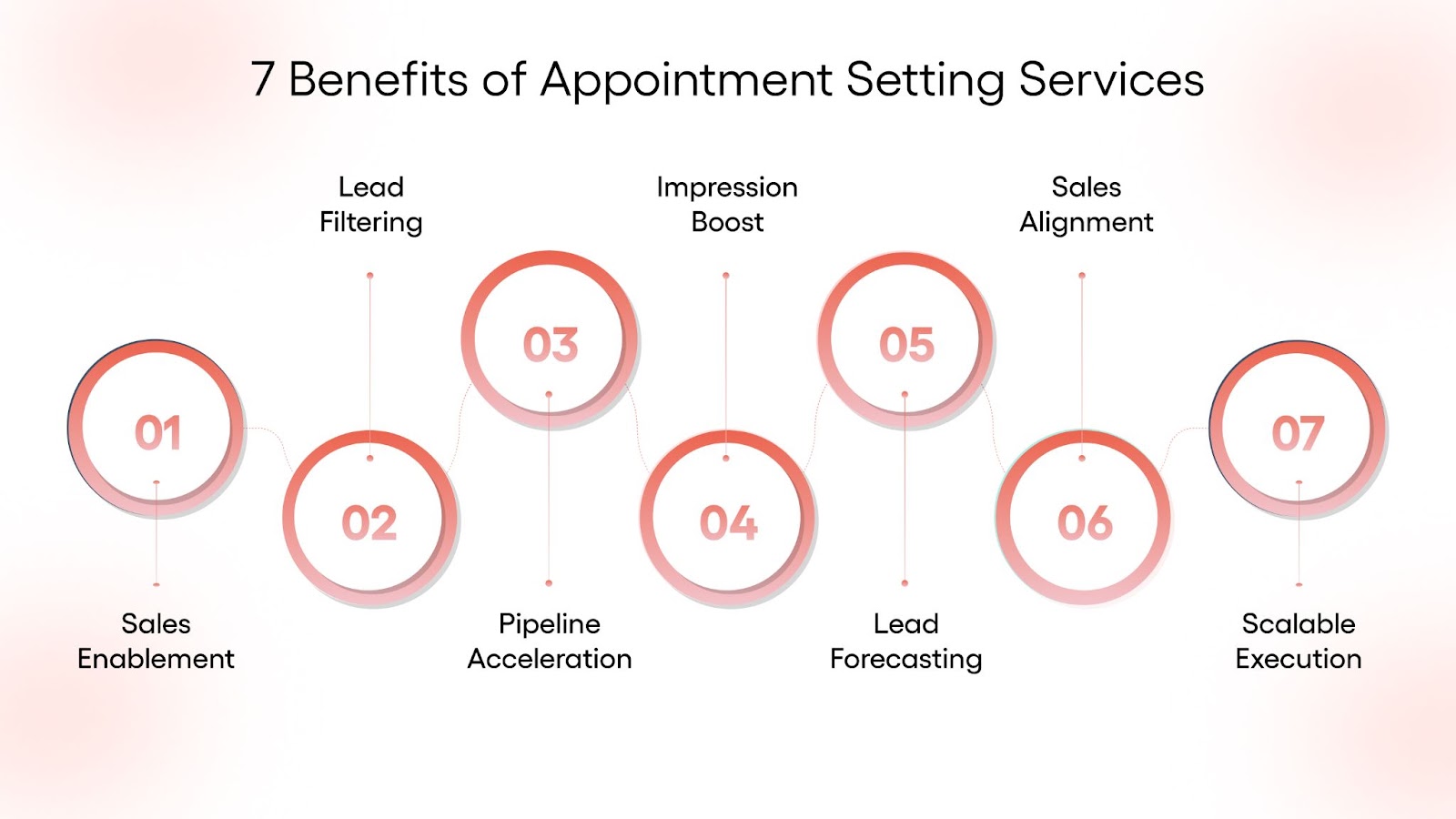
Appointment setting isn't just admin work; it’s what keeps your pipeline healthy. It removes guesswork, builds rhythm, and lets your sales team focus on what actually moves the needle.
1. Frees Your Sales Team to Do Actual Selling
In most companies, sales reps spend more time juggling follow-ups, chasing unresponsive leads, or managing schedules than having real conversations. That’s a waste of their ability and your payroll. Appointment setting separates the early-stage work from the sales process. By the time a call lands on their calendar, it’s with someone who’s already said, “Yes, I’m open to this.” That changes how your reps use their time and how much they close.
2. Filters Out Noise Before It Hits Your Team
Not every lead is a lead. Some just want to browse. Some are job seekers. Some click once and vanish. Without a layer between marketing and sales, that noise floods your pipeline. Appointment setters are trained to qualify based on what matters: budget, decision-making power, urgency, and fit. This doesn’t just cut the clutter. It protects your reps’ time from chasing leads that were never going to buy.
3. Keeps the Process Moving in Complex Sales Cycles
If you’re in MSP, fulfillment, staffing, or software services, you already know: the sales cycle isn’t a straight line. It stops and starts. Multiple people weigh in. Timing slips. Appointment setting gives you a system to keep those deals alive and moving, checking in, re-engaging, and finding the right time to bring everyone to the table. That kind of consistency is what keeps the deal from going cold.
4. Strengthens First Impressions
The first contact your lead has with your company shouldn’t feel like a script. Good appointment setters know how to listen, adjust, and speak in the language of your industry. That matters because when you’re speaking to someone in a competitive space, like a CFO choosing between five service providers, the first conversation needs to make sense and stand out. It’s not just about booking a call. It’s about showing that the next call will be worth their time.
5. Adds Predictability to Lead Flow
Sales teams need rhythm, not surprises. When appointment setting becomes part of your regular process, your pipeline stops being a guessing game. You know what’s coming, how many meetings are booked this week, and where each conversation stands. That doesn’t just help sales planning. It helps hiring, forecasting, and managing your team’s bandwidth.
6. Bridges the Gap Between Marketing and Sales
Often, there’s a disconnect between what marketing is pushing and what sales is hearing. Appointment setters sit in the middle. They spot patterns early, questions lead to keep asking, points of confusion, and objections. That feedback can go straight back to your team and help you tighten your pitch, update your content, or rework your messaging. It’s not just booking calls, it’s closing the gap between what your audience hears and what they need to know.
7. Helps Small Teams Compete Like Big Ones
If you’re working with a lean sales team, every hour matters. You can't afford to lose time chasing leads that ghost after two emails. Appointment setting gives smaller teams the ability to scale their presence, have more conversations, have more follow-ups, and have more traction, without overloading the core team. You’re showing up consistently, even when your sales reps are knee-deep in active deals.
Done right, appointment setting is more than booking calls; it’s how good teams stay consistent, close better, and grow without burning out.
Why Should You Consider Outsourcing Your Appointment Setting Program?
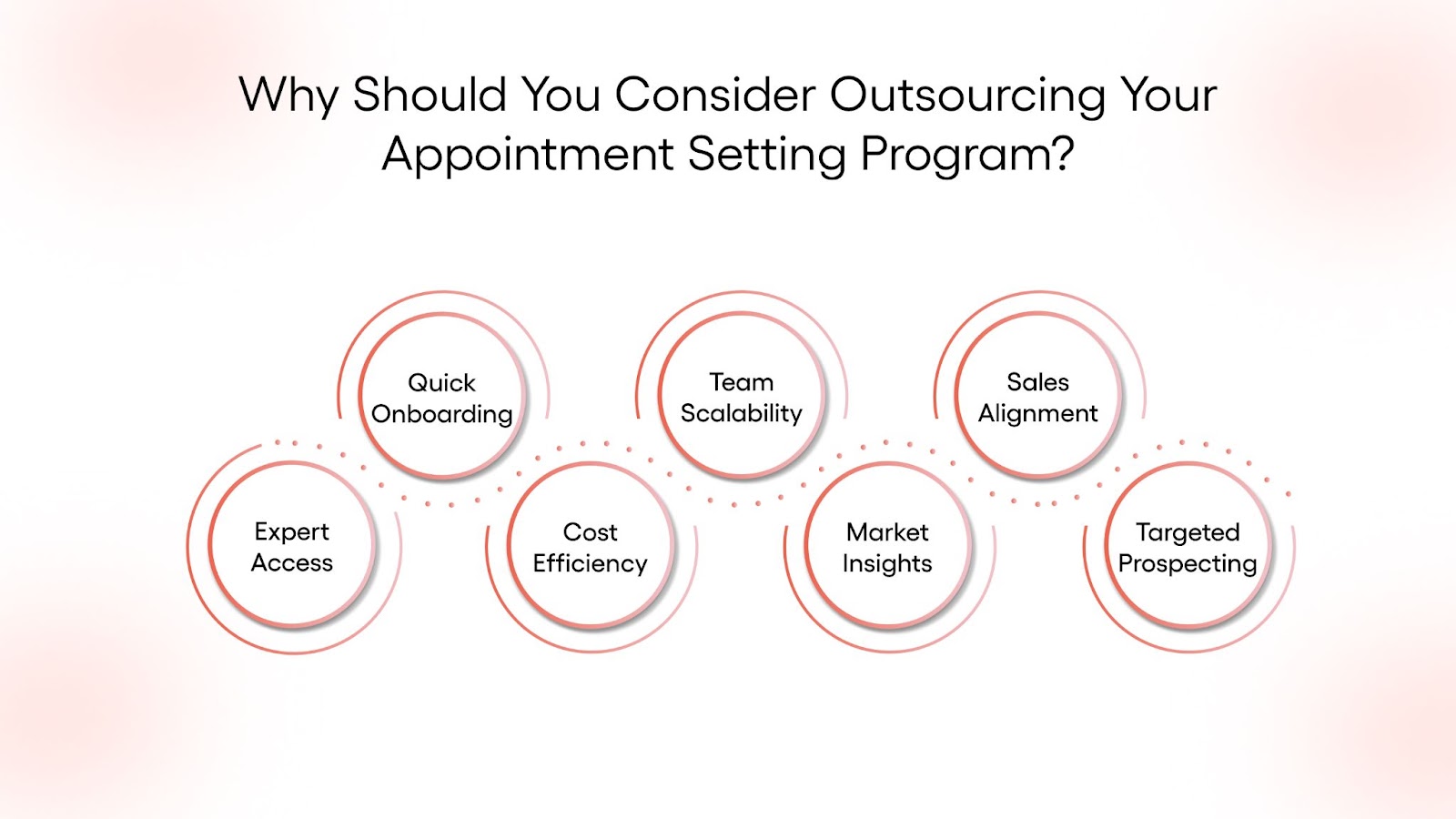
Outsourcing appointment setting isn't about offloading tasks; it’s about tightening your sales process without stretching your team thin. Here's where it adds real value:
- Access to Experienced Specialists
Outsourced teams bring focused experience across industries like MSP, staffing, SaaS, and fulfillment. Their only job is booking quality calls—no distractions, no split roles. - Faster Ramp-Up Time
Building an in-house program takes time: hiring, training, and testing scripts. A reliable partner already has infrastructure in place and can start delivering meetings within weeks. - Lower Cost Per Lead Over Time
You avoid fixed costs like salaries, benefits, and management overhead, while still getting a dedicated resource. Most providers offer pricing tied to actual outcomes. - Scalability Without New Headcount
If you need 5 meetings this month and 20 next, a partner can scale output without you worrying about bandwidth or burnout. - Fresh Market Feedback
Outsourced setters engage with prospects daily. That frontline visibility uncovers objections, patterns, and messaging issues that marketing often misses. - Stronger Sales Focus Internally
Your closers stay focused on deals in motion, not chasing down replies or qualifying weak leads. That leads to better win rates and less frustration. - Smarter Prospecting Through Targeted Campaigning
Outreach works better when it speaks to the right people. Campaigns that focus on role, industry, or pain point tend to get more thoughtful responses and waste fewer leads. It’s not about volume, it’s about fit.
With 9+ years of hands-on experience, TLM builds campaigns that reflect how real people make buying decisions, specific, timely, and grounded in context. If your team is stretched or you’re not consistently booking quality calls, outsourcing isn’t a shortcut; it’s a reset. It gives your sales team space to do their actual job.
Appointment Setting Pricing Models: What to Expect
Appointment setting isn’t one-size-fits-all, and neither is the pricing. What you pay depends less on how long someone spends dialing and more on what you expect in return. Here's a breakdown that gets to the point.
Pay Per Appointment
You only pay when a meeting gets booked. Works best if you care about results, not how many emails or calls it took to get there.
Monthly Retainer
In this setup, you pay a fixed monthly fee for a set volume of work, outreach, prospecting, follow-ups, and booked calls. Retainers start at $2,000/month and increase depending on scope and volume.
When it works: If you want steady pipeline coverage and don’t want to manage the day-to-day.
Per Lead (Qualified, But Not Always Booked)
You get a list of contacts that meet your criteria and have shown interest. Prices vary a lot, anywhere from $25 to $200 per lead, depending on the filters (title, industry, intent signals, etc.).
When it works: If your internal team is strong at closing but weak at sourcing.
What Affects the Cost?
- Campaign Complexity
If you’re asking for deep targeting (like mid-sized SaaS firms in 3 specific zip codes), it takes more prep, and you’ll pay for that precision.
Volume and Commitment
Longer-term contracts or larger lead volumes often get better rates. One-off projects tend to cost more per lead. - Experience of the Provider
Providers who’ve worked in your niche (say, MSPs or staffing) often cost more, but save time because they “get it” already.
The goal isn’t to pay less, it’s to spend smarter. A reliable appointment setting setup costs less than hiring in-house and gives you faster traction with fewer missteps.
Mistakes That Undermine Appointment Setting
Not every appointment-setting effort delivers results. Some missteps are common, but avoidable if you know what to watch for.
1. Poor Fit Between Your Brand and the Outreach Team
The people reaching out on your behalf need to sound like your business. Misaligned tone or unclear messaging can confuse prospects and hurt credibility. Before launching anything, make sure your outreach team understands who you are, what you offer, and how your buyers think.
2. Rushing Without Setting Standards
Without a clear definition of success, it’s hard to tell what’s working. Set upfront expectations:
- What counts as a qualified lead
- How soon should follow-ups happen
- What kind of responses should be prioritized
This keeps both sides aligned and accountable.
3. No Process for Reviewing Results
If you’re not checking how conversations are going, quality can slip. You don’t need to hover, just carve out time regularly to review:
- How many meetings are happening
- What outcomes they leading to
- Whether the right people are being booked
Even quick reviews can help fine-tune things before they veer off track.
4. Treating Appointment Setting as a “Set It and Forget It” Task
This isn’t a one-time project, it’s an ongoing process. Markets shift, messaging evolves, and buyer behavior changes. Stay involved just enough to keep your strategy grounded in reality.
Handled right, appointment setting becomes a long-term growth lever, not just a box to tick. A little structure and review go a long way in keeping it sharp and worth the spend.
How to Choose the Right B2B Appointment Setting Service
Not all appointment setting services are built the same, and choosing the wrong one can cost more than just money. A capable partner doesn’t just generate leads; they influence deal velocity, sales team efficiency, and customer experience. Here’s what to look for:
Assess Domain Expertise and Operational Depth
A service’s track record in your specific industry matters. An appointment setting team working for SaaS companies will differ significantly from one specializing in manufacturing or healthcare. Look for:
- Vertical-specific experience: Have they worked with businesses like yours? Ask for sector-relevant case studies, not generic testimonials.
- Conversion-driven KPIs: Instead of vague metrics like "calls made," request hard numbers, SQL rate, show-up rate, and pipeline value generated.
- Team structure and training methodology: A good provider should be transparent about how they onboard and upskill their reps. Do they use playbooks tailored to your audience personas? Is there QA in place?
Scrutinize Pricing in the Context of ROI
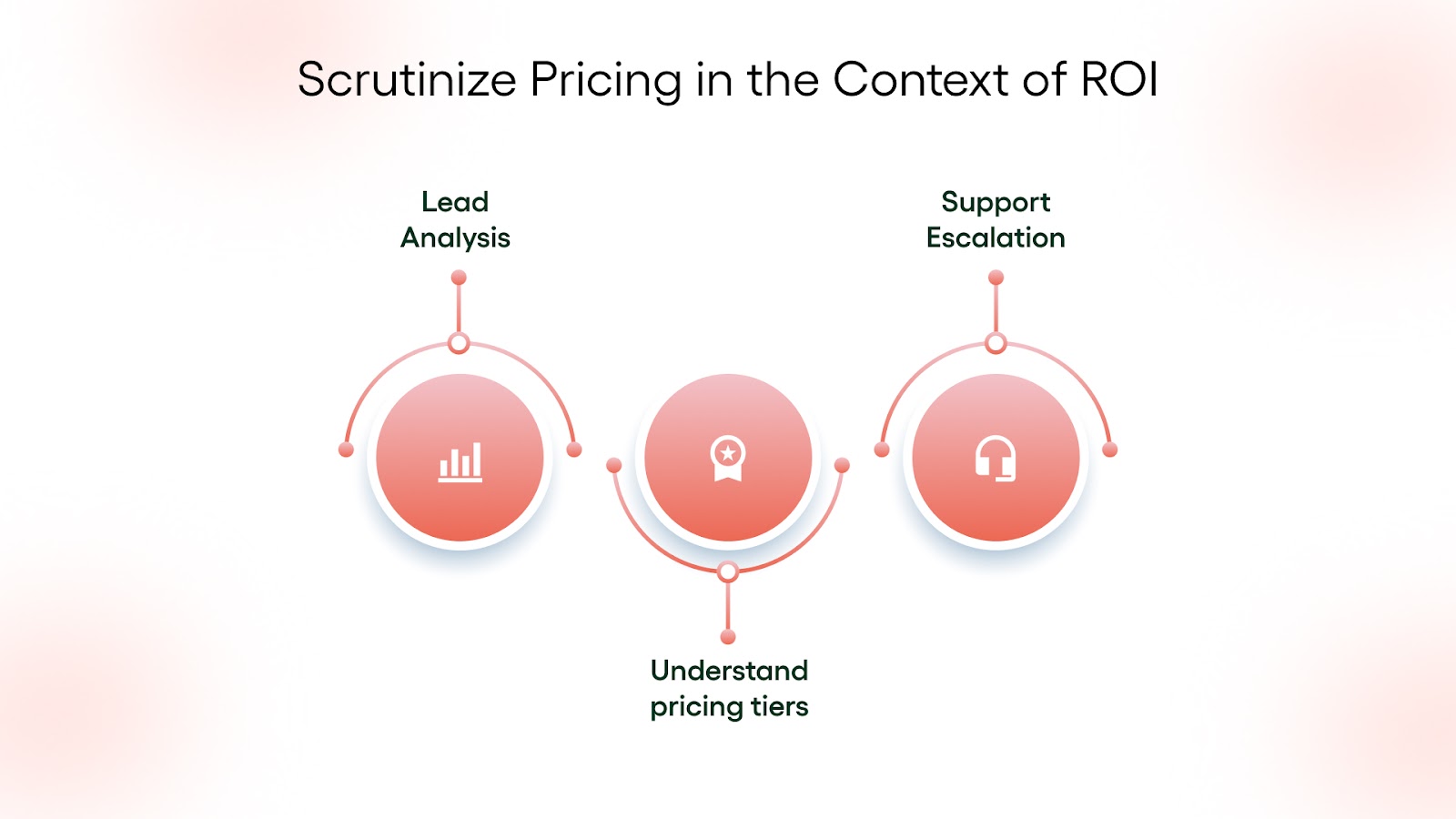
Appointment setting isn’t a commodity service. Cheaper doesn’t mean better if it yields junk leads or no-shows. Before signing a contract:
- Analyze lead quality benchmarks: Ask for average conversion rates from cold lead to appointment and then to qualified opportunity. A good range is 15–30% appointment-to-opportunity for B2B.
- Understand pricing tiers: Are you paying per meeting, per lead, or via a retainer? Do they charge for rescheduled meetings? Ensure you’re not incentivizing quantity over quality.
- Service responsiveness and escalation paths: If a rep misrepresents your offer or misbooks a lead, how fast is the correction? Is there a dedicated account manager or just a generic support line?
Match Capabilities with Your Go-To-Market Motion
Different businesses have different sales motions. The right appointment setting service should complement, not conflict with—yours.
- Top-of-funnel lead gen vs. mid-funnel qualification: Some services specialize in awareness and outreach. Others excel at qualifying inbound leads or targeting decision-makers directly. Identify where your gaps are.
- Account-based vs. volume-based targeting: If you’re selling high-ticket B2B solutions, a spray-and-pray approach will dilute your brand. Choose providers who can personalize outreach by account and buying role.
Common Misconceptions About Appointment Setting Services
Outsourced appointment setting has evolved, but outdated assumptions persist. Let’s debunk the most common myths.
Misconception: “All Appointment Setting Services Offer Similar Value”
Reality: The difference between mediocre and top-tier services can be night and day. While some services rely on outdated scripts and mass outreach, others build tailored messaging frameworks, optimize cadences, and iterate based on response analytics. A well-trained team backed by data can triple your meeting acceptance rate compared to generic providers.
Misconception: “Outsourcing Hurts Brand Reputation and Communication Quality”
Reality: When done right, outsourced reps can communicate as seamlessly as in-house teams. The key is alignment, shared messaging guidelines, regular calibration calls, and SLA-backed accountability.
Read: The Benefits of Outsourcing Appointment Scheduling
Misconception: “Building an Internal SDR Team is Cheaper in the Long Run”
Reality: The hidden costs of hiring, training, and retaining SDRs add up fast, especially when churn rates in sales development roles average 39% annually. Outsourced teams let you bypass recruitment costs, tool licensing, and training overhead, while offering predictable pricing and performance guarantees.
Advanced Strategies for Maximizing ROI from Appointment Setting
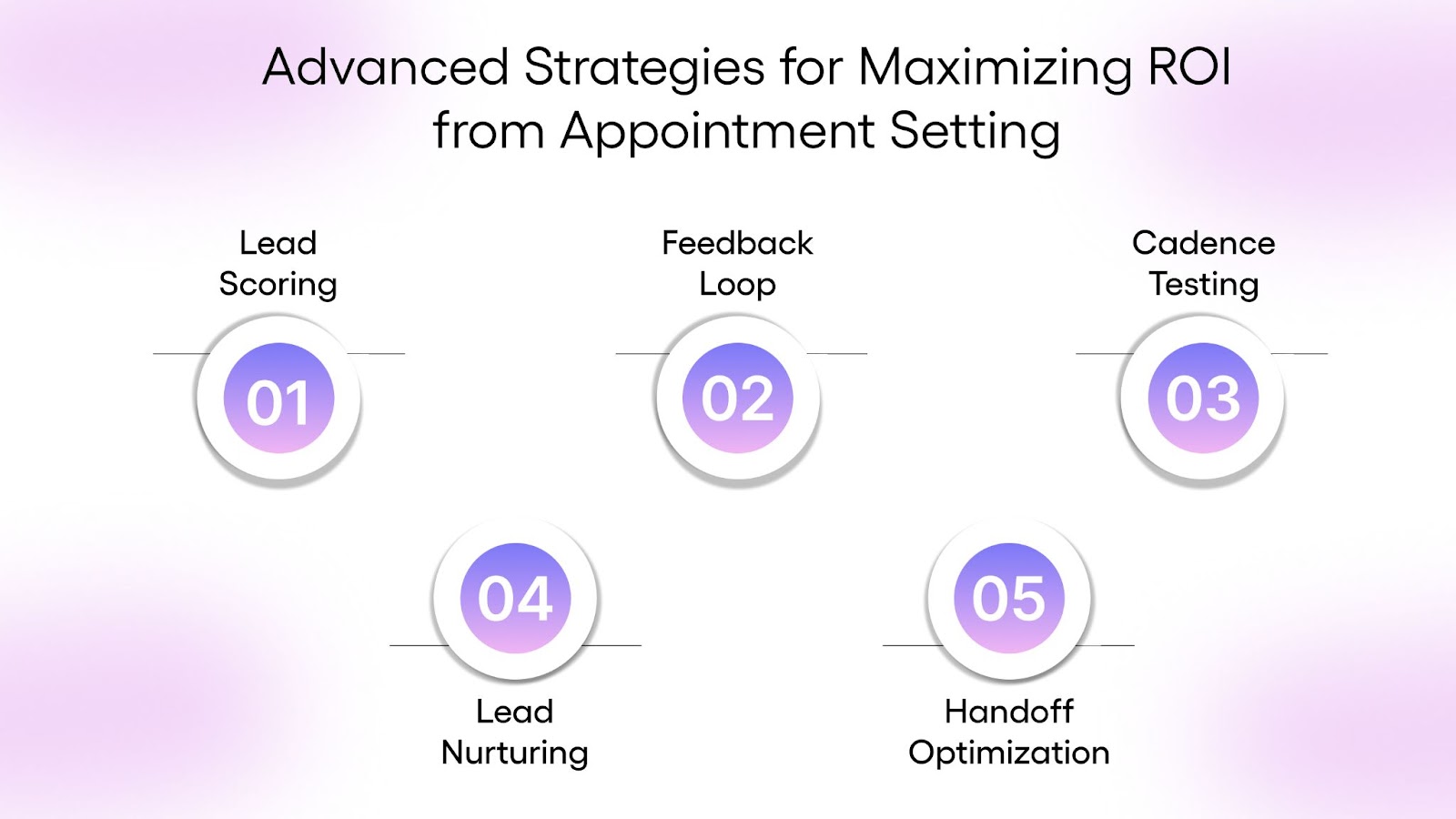
Booking meetings isn’t the endgame. The real ROI from appointment setting comes when those meetings consistently turn into pipeline and revenue. To get there, businesses must go beyond basic outreach tactics and build smarter systems around prioritization, engagement, and feedback. Here’s how to elevate your appointment-setting efforts into a predictable growth engine:
1. Tiered Lead Prioritization Based on Revenue Potential and Intent
Not all leads deserve equal time. A common failure point in appointment setting programs is treating every contact like a high-value opportunity. Smart teams build a tiering model—typically A, B, and C—using criteria like:
- Firmographics: Company size, annual revenue, industry, and location.
- Technographics: Tools or platforms the company uses, especially if they align with your product.
- Behavioral intent signals: Website visits, pricing page views, content downloads, or job postings related to your category.
- ICP alignment: Fit against your ideal customer profile based on historical close rates.
Outreach intensity should match the lead’s tier:
- Tier A: High-touch, personalized sequences (e.g., custom videos, voice notes, executive outreach).
- Tier B: Semi-personalized cadences with industry-specific messaging.
- Tier C: Automated nurturing via email and retargeting until intent improves.
This framework ensures your best-fit prospects get the attention they deserve, and your team doesn’t burn time on low-return efforts.
2. Real-Time Feedback Loops Between Sales and Appointment Setters
Even the best appointment setters need context from the sales floor. A closed-loop feedback system ensures that insights from booked meetings feed back into outreach strategy. This loop helps with:
- Messaging calibration: Are reps hearing objections about price, features, or trust? That should immediately inform how outreach is framed.
- Qualification refinement: Sales may flag patterns, such as meetings being booked with users instead of decision-makers, that the setting team can adjust for.
- No-show reduction: Sharing which leads tend to ghost helps tweak confirmation flows. Simple changes like calendar reminders, pre-call emails, or LinkedIn nudges can improve attendance.
Pro tip: Use shared dashboards (e.g., “good fit,” “wrong contact,” “budget issues”) to automate parts of this loop without adding admin overhead.
3. Cadence Optimization Through A/B Testing
Even the best cadences can become stale. Top-performing appointment setting programs regularly test variables such as:
- Email subject lines: Personalization tokens vs. curiosity gaps vs. value-first.
- Touch frequency: Does a 6-touch sequence outperform an 8-touch? Does spacing matter?
- Send times: Weekdays vs. weekends, morning vs. late afternoon.
Track what improves reply rates, positive responses, and meeting confirmations—not just open or click-through rates. Continuous testing ensures your outreach evolves with shifting buyer preferences.
Read: The Best Time to Send Marketing Emails in 2025
4. Lead Recycling and Long-Term Nurturing
When a prospect declines a meeting, it doesn’t always mean they’re uninterested. Many are simply not in the right buying window. Without a system to track and re-engage them, you're leaving warm leads untapped.
A structured lead recycling strategy helps you make the most of your outreach efforts:
- Tag leads with clear reason codes like “already working with a vendor,” “no budget this quarter,” or “revisit after internal changes.”
- Segment them by re-engagement timeline—not every lead needs monthly follow-up. Some may require a 90-day pause, others a longer cycle.
- Use tailored reactivation campaigns instead of generic follow-ups. This could include updated case studies, relevant seasonal messaging, or shifts in market trends that impact their business.
This approach keeps your pipeline active, rooted in context, and builds on previous efforts, rather than starting from scratch each month.
5.Conversion-Oriented Meeting Handoffs
A weak transition between the appointment setter and the sales representative can lead to missed opportunities and reduced conversion rates. To maintain momentum and protect the value of each scheduled meeting, the handoff process must be structured and precise:
- Document and share key meeting context—including the prospect’s goals, challenges, decision-making timeline, budget considerations, and urgency.
- Set clear expectations with the prospect during the booking stage. Clarify the purpose of the meeting and outline the value of speaking with a subject matter expert.
- Send a detailed calendar invite that introduces the sales representative, outlines the agenda, and includes a reminder to improve attendance rates.
A consistent and transparent handoff equips both parties for a productive conversation, improving the likelihood that the meeting will progress toward a business outcome.
Bonus: Build Incentives Around Pipeline, Not Just Volume
If your appointment setters are incentivized solely on booked meetings, you risk flooding your team with low-fit calls. Instead, align compensation to outcomes that reflect pipeline contribution:
- Show-up rate
- Conversion to opportunity
- Revenue influence
This encourages quality over quantity and keeps both sales and appointment setting teams aligned.
Maximizing ROI from appointment setting isn’t about “more touches” or “more meetings.” It’s about intentional systems, prioritized leads, strategic multichannel outreach, smart tooling, and tight sales alignment. When done right, it becomes more than a function—it’s a competitive edge.
Ready to Turn Interest into Revenue?
The true value of appointment setting isn’t in just filling calendars, it’s in surfacing real intent, securing meaningful conversations, and setting your sales team up to close. At TLM, we don’t just book meetings, we engineer them to convert.
From identifying signals buried in cold outreach to handling technical objections, scheduling across time zones, and protecting handoffs with airtight processes, our team manages every step with precision. That’s why 96% of our clients, primarily MSPs across the U.S., Canada, and Australia, trust us to build pipelines that actually perform.
If you’re done wasting time on unqualified leads or no-show meetings, let’s talk. Schedule a strategy call with TLM. Click here to see how this works in real time, through real client results and proven outreach flows.
Wrapping Up
Appointment setting is often treated as a support task, but in reality, it plays a decisive role in pipeline quality, sales velocity, and team productivity. From filtering out unqualified leads to warming up high-intent prospects, it creates the conditions for meaningful sales conversations.
When approached strategically, with the right systems, messaging, and handoff processes, it becomes more than just a calendar-fill exercise. It’s a measurable contributor to revenue growth.
For teams looking to tighten their funnel without adding pressure on sales, structured appointment setting is where momentum starts. At TLM, we work with growth-focused companies to build appointment-setting workflows that connect intent with opportunity, without diluting brand or burning leads.
FAQs
1. What do appointment setting services include?
Appointment setting services typically include lead research, outreach via email or phone, qualifying prospects, and scheduling meetings on behalf of your sales team. These services help streamline your sales process and free up your internal team to focus on closing deals.
2. How do appointment-setting services help increase sales?
Appointment setting services increase sales by ensuring your team speaks only with qualified leads. They handle the early stages of the sales funnel, so your reps spend less time prospecting and more time converting interested prospects into customers.
3. Are appointment setting services worth the cost for small businesses?
Yes, appointment-setting services can be cost-effective for small businesses. They reduce time spent on cold outreach, improve lead quality, and help generate a steady sales pipeline, without the need to hire a full-time in-house team.
4. What industries benefit most from appointment-setting services?
Industries with long sales cycles or complex offerings, such as SaaS, B2B services, IT, healthcare, and finance, benefit most from appointment-setting services. These sectors rely heavily on high-quality lead engagement and relationship-building.


